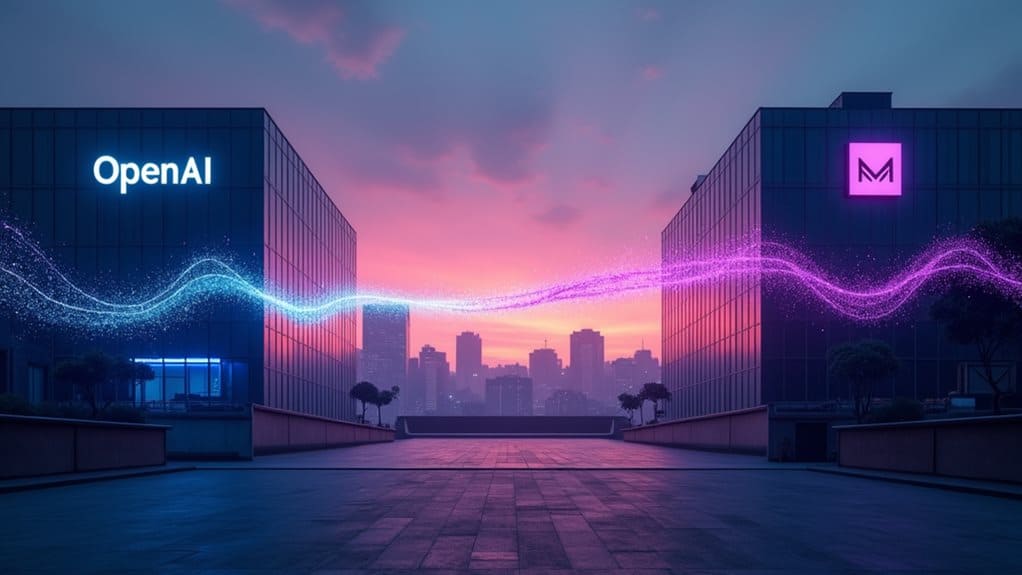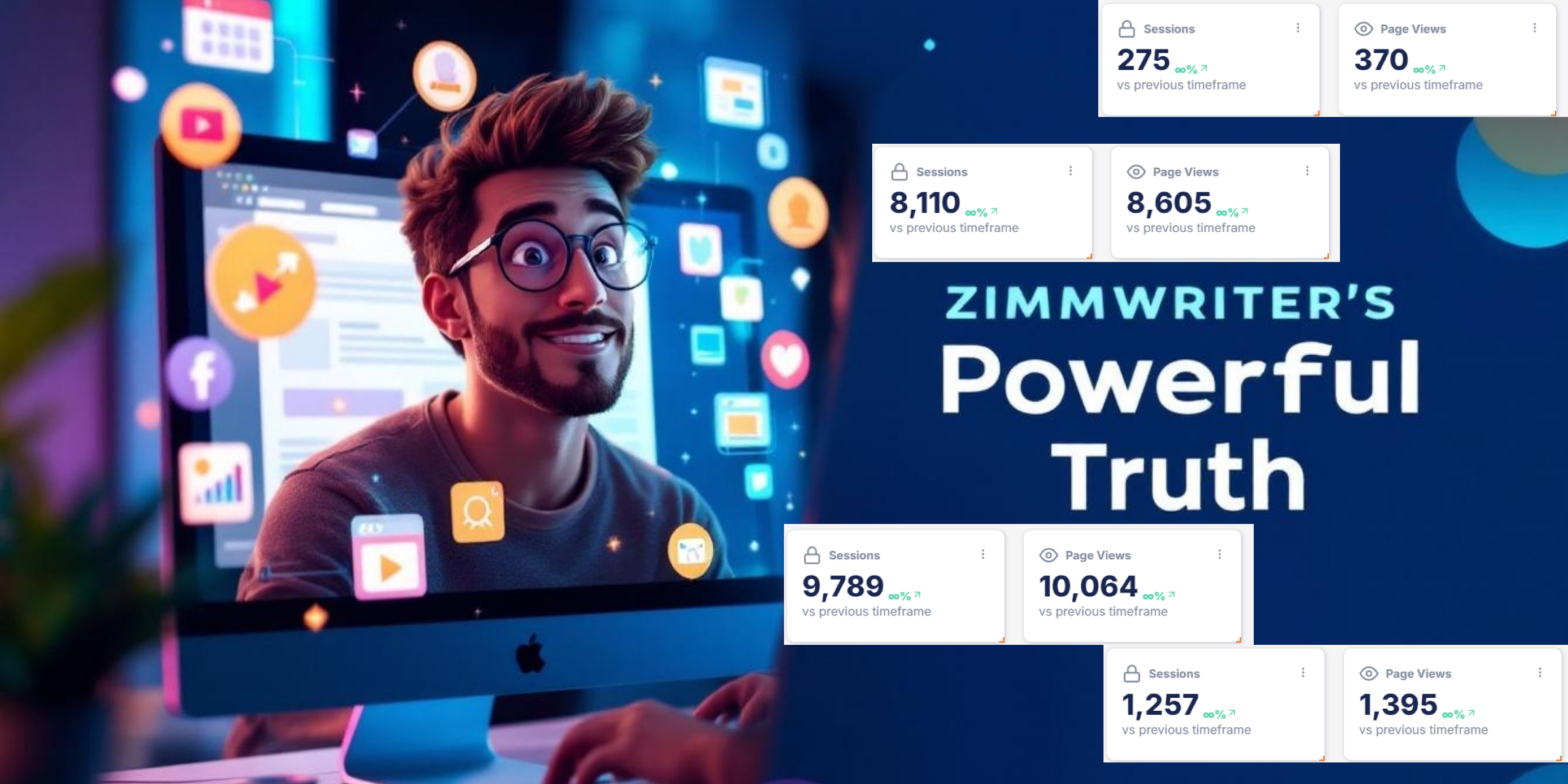Meta has launched an aggressive talent acquisition campaign targeting OpenAI, successfully recruiting at least eight researchers including four key GPT-4 developers. Despite offering signing bonuses up to $100 million, many OpenAI staff remained loyal to the company’s mission and culture. Mark Zuckerberg’s personal involvement underscores Meta’s ambitions in Artificial General Intelligence, while Sam Altman has identified Meta as OpenAI’s biggest rival. The talent war reveals the extraordinary value placed on top-tier AI expertise.

While AI companies regularly compete for skilled workers, Meta has launched an unprecedented raid on OpenAI’s talent pool, recruiting at least eight researchers including four key developers behind GPT-4. This aggressive hiring surge specifically targeted OpenAI’s Zurich office, where several researchers had previously worked together at DeepMind, suggesting a strategic acquisition of pre-established team dynamics.
You’re witnessing one of the most aggressive talent poaching efforts in AI history. Meta reportedly offered signing bonuses up to $100 million to entice OpenAI employees. Despite these massive financial incentives, many OpenAI staff members have resisted the offers, demonstrating loyalty to OpenAI‘s culture and mission. Sam Altman confirmed that no top talent accepted these extremely lucrative Meta offers.
Meta’s $100 million poaching campaign clashes with OpenAI’s loyalty-inspiring culture in an unprecedented AI talent war.
The exodus includes notable scientists like Shengjia Zhao, Shuchao Bi, Jiahui Yu, and Hongyu Ren. OpenAI has confirmed these departures, acknowledging the talent drain they’re experiencing. These researchers now form the core of Meta’s newly established Superintelligence Research Institute.
CEO Mark Zuckerberg has taken personal interest in this talent acquisition strategy following LLaMA 4’s underperformance. His direct involvement signals Meta’s determination to lead in Artificial General Intelligence development. The company is pursuing both in-house talent growth and external acquisitions of innovative AI startups. This aligns with Meta’s broader initiative of recruiting top researchers from leading AI organizations to strengthen its competitive position.
You can see the competitive dynamics intensifying between these AI giants. Sam Altman, OpenAI’s CEO, has publicly acknowledged Meta as his company’s biggest rival. This recognition reflects the high-stakes nature of their competition.
The movement of core GPT-4 developers suggests a potential shift in innovation leadership and intellectual property expertise. OpenAI has entered damage control mode to retain its remaining critical talent.
This talent war reveals the scarcity and exceptional value of top-tier AI researchers globally. Large tech firms are mobilizing considerable financial and strategic resources to secure competitive advantage. The battle for human capital in AI continues to push compensation packages to unprecedented levels, reshaping the industry’s terrain and potentially affecting the pace and direction of AI breakthroughs.
Frequently Asked Questions
How Much Salary Do Top AI Researchers Earn?
As a top AI researcher, you’ll earn between $150,000 and $300,000+ annually in base salary, with the highest performers exceeding this range.
Your compensation package often includes substantial equity and performance bonuses not reflected in these figures.
The median salary for AI researchers worldwide is approximately $169,150, while the top 10% earn around $302,400.
Some specialized roles like AI Product Managers command higher pay, averaging $182,587 annually.
What Specific Projects Are the Poached Talent Working On?
The poached talent from OpenAI is working on several key projects at Meta’s superintelligence team.
You’ll find them developing advanced neural network designs, training large-scale generative models, and innovating in AI cognition.
They’re specifically focused on boosting Meta’s Llama models, improving multimodal understanding capabilities, code generation, and real-time language processing.
Their expertise contributes to Meta’s broader goal of creating AI systems that can outperform human thinking and understanding capabilities.
How Do Non-Compete Clauses Work in AI Companies?
In AI companies, non-compete clauses restrict you from working for competitors for a specific period after leaving.
These agreements protect proprietary AI technologies, algorithms, and trade secrets.
The clauses typically specify restricted activities, geographic limitations, and duration (usually 12 months to 3 years).
Courts enforce them only when reasonable in scope and duration.
Companies must provide consideration, such as continued employment or compensation, in exchange for your compliance with these restrictions.
Are Smaller AI Startups Still Able to Attract Talent?
Yes, smaller AI startups can still attract talent despite competition from giants.
You’ll find they leverage unique advantages like creative freedom, meaningful impact, and faster career advancement opportunities.
Many talented professionals prefer startups’ innovative cultures and hands-on work environments.
These companies also build strong university partnerships and focus on internal skill development.
While they can’t match Meta’s or OpenAI’s compensation packages, startups offer equity stakes and emphasize work-life balance to create compelling alternatives for AI specialists.
How Does AI Talent Poaching Affect Product Development Timelines?
When companies poach your AI talent, you’ll experience considerable project delays.
You’ll face temporary productivity drops as you transfer knowledge to new team members. Your development timelines stretch when key engineers leave mid-cycle, forcing workflow interruptions and project adjustments.
Your remaining team must redistribute workloads and reestablish communication patterns.
Meanwhile, companies acquiring your talent accelerate their roadmaps through instant skill infusion, creating faster prototyping capabilities while your projects may become deprioritized or stalled.





